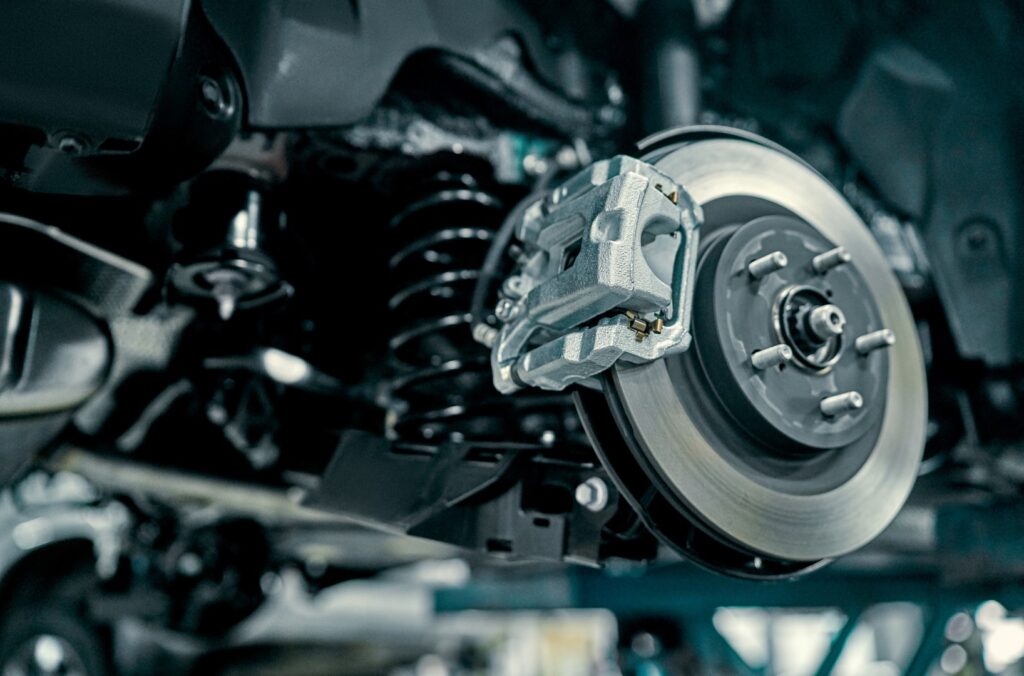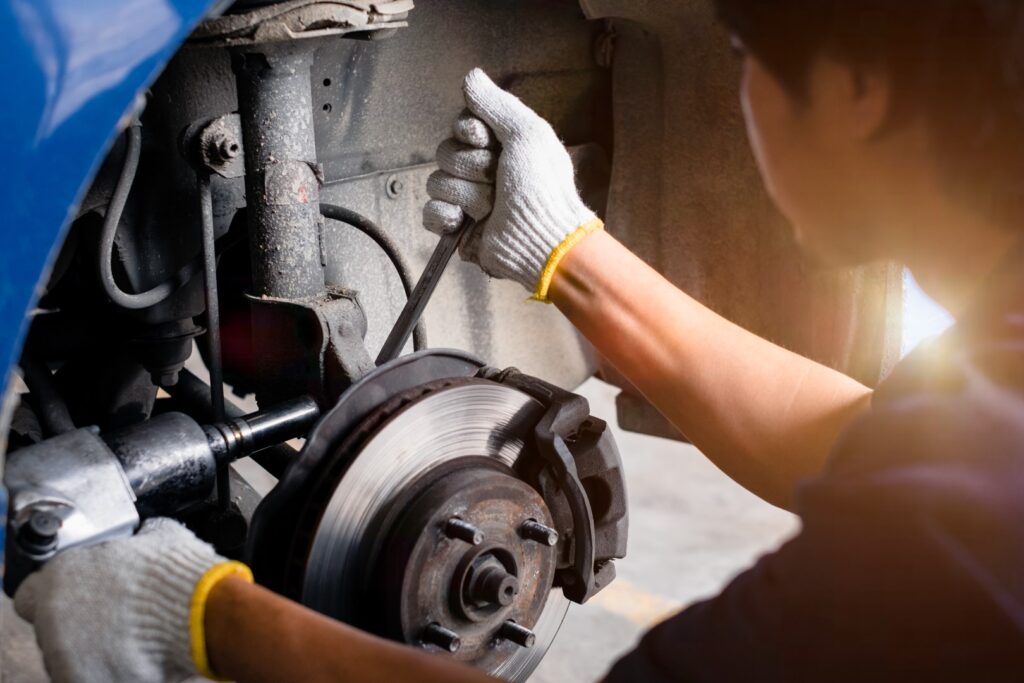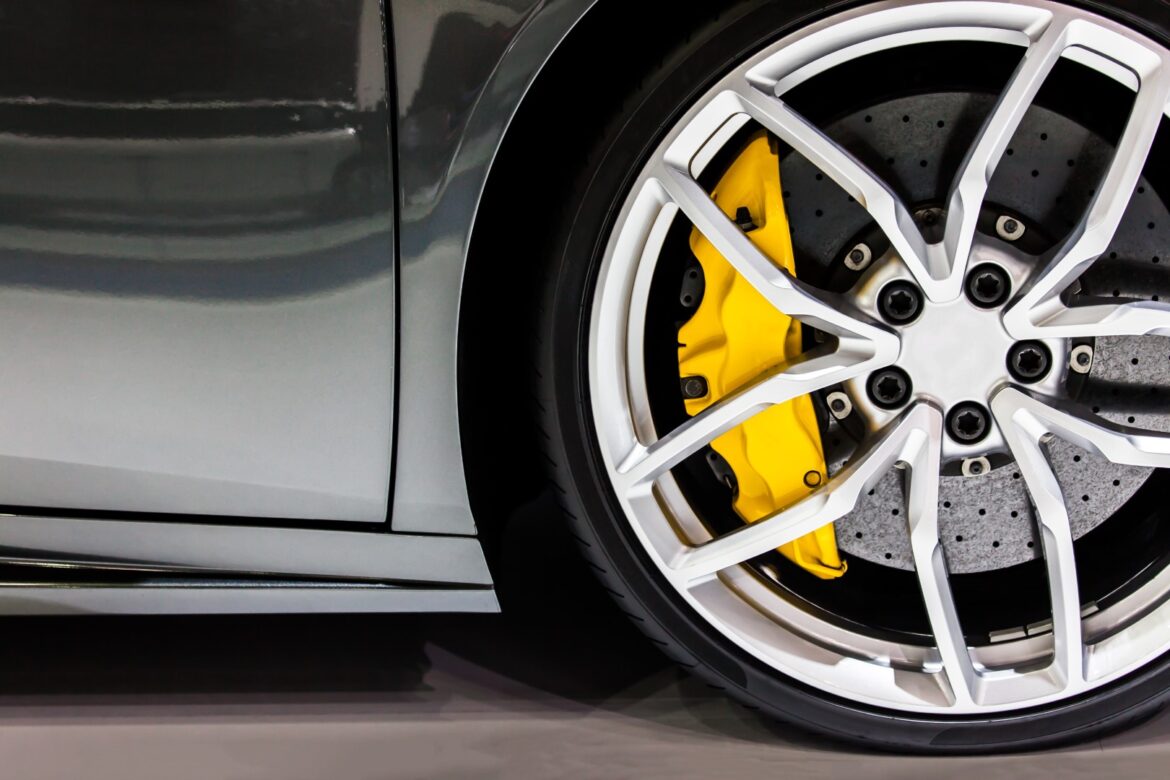Until something goes wrong, there are a lot of car owners who don’t give brake maintenance much thought. Avoid making this error. When you press the brake pedal, a complicated system of parts starts working. Several components need to be replaced on a regular basis in order for the system to continue functioning properly. Your brake pads are one of those parts that you will probably replace the most frequently.

If you want to drive safely, you need brakes that work correctly. However, just like any other mechanical component, brakes eventually become worn out and must be replaced.
While most present day stopping mechanisms are intended to last a lot of time, how frequently your vehicle will require its brakes overhauled relies on how you drive, driving circumstances, and the kind of driving that you do. For instance, if you drive a lot on freeways and spend a lot of time in stop-and-go traffic, your brakes will probably wear out faster. In general, you will use your brakes more in inclement weather like rain, ice, and snow.
Brakes typically last about 50,000 miles, but some brakes need to be replaced as early as 25,000 miles and as late as 70,000 miles. The life expectancy of your vehicle’s brakes can be affected by driving habits, driving conditions, and other factors.
5 Warning Signs You Need New Brakes
1. You hear a grinding sound.
An audible indication that it is time for new brakes is a rumbling, deep grinding sound made by metal. On the bottom of many brake pads, tiny metal ridges serve as an indicator to the driver that the pads have worn down. When you hear a grinding sound, you should take the car to a professional mechanic right away. If you continue to drive with these brake pads in this condition, the brakes could rub against one another, causing damage to the rotors and other costly repairs.
2. You hear squeaks or squealing.
If your vehicle makes a squeaky or screeching “metal-on-metal” sound, you should have your brakes checked right away.
When you brake, the brake pads press against either the brake rotor or the brake drum to bring your vehicle to a stop. These pads begin to become thin over time. Before they arrive where they are less powerful and could harm your brake rotors, little metal shims incorporated into the brake cushions will give a perceptible admonition that your brake cushions need supplanting.
However, if the weather is wet, there is a possibility that some rust will form on the surface of the brake rotors. A similar squeaking sound may occur as the brake pads remove the rust.

3. Pulsating or vibrating when the brakes are applied
Another important warning sign that you shouldn’t ignore is if your brakes pulsate or vibrate when you apply them. This could be a warning that your brake rotors have become twisted and are as of now not smooth, causing a particular beating sensation when the brake cushions press against the lopsided rotors.
Heat buildup as a result of excessive or extreme use is frequently the cause of warped rotors. For instance, if you are towing a large, heavy object like a trailer or boat and keep braking as you go downhill, this could cause the rotors to become warped.
4. The brake light turns on.
A sensor on the brake pad of many vehicles monitors the level of wear, and when it reaches a certain point, the sensor causes the dashboard light to turn on. If your brake light is on, you should take your car to a professional right away to have the brakes checked.
5. Your vehicle pulls to one side.
When braking, a car that pulls to one side could mean that the brake pads are worn out or that the calliper is broken. The rotors have the potential to become warped if these issues persist. Towing, mountainous terrain, or aggressive braking can also put stress on the brakes, resulting in pulling.
Does the brake pedal violently shake whenever you step on it? Your brake pads might be causing the problem. Brake pads are typically held together with a kind of binding resin. As each brake pad wears down, this adhesive gets hot and gets smeared across the rotor. Under ideal circumstances, it will form a layer that’s evenly spread over the disc’s surface. But if a brake pad gets overheated, the resin may not be distributed uniformly. Mechanics call this issue “glazing” and it can cause brake pedals to vibrate.
A pulsating brake pedal isn’t a trustworthy one. If this issue goes unchecked, your ability to brake safely could be compromised. When it comes to brake-pad upkeep, stay safe and don’t procrastinate.
You’re out driving with the radio off and the windows rolled up. In the relative quiet, you hear a faint scraping, squealing, or buzzing sound. You also observe that, whenever you hit the brakes, that mysterious noise goes away, only to return again as soon as your foot comes off the brake pedal. What’s going on here?
Today, most—but not all—brake pads are manufactured with built-in “wear indicators.” The sole purpose behind these things is to emit that unpleasant screech you just heard. Wear indicators are metal tabs located near the top of typical brake pads. When the brake pad itself wears down to a dangerous extent, the indicator will scrape against the rotor. This creates a distinctive grating noise which warns the driver that his or her current brake pads are in danger of eroding away altogether.

